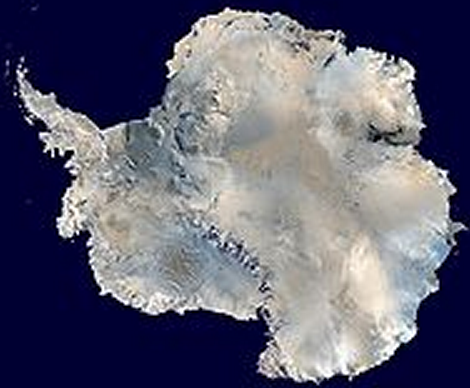Protein adaptations in Antarctica may explain strategies for survival on Mars
March 13, 2013
Research from the University of Maryland School of Medicine has revealed key features in proteins needed for life to function on Mars and other extreme environments.
The researchers, funded by NASA, studied organisms that survive in the extreme environment of Antarctica.
They found subtle but significant differences between the core proteins in ordinary organisms and Haloarchaea, organisms that can tolerate severe conditions such as high salinity, desiccation, and extreme temperatures.
The research gives scientists a window into how life could possibly adapt to exist on Mars.
The study, published online in the open access journal PLoS One on March 11, was led by Shiladitya DasSarma, Ph.D., Professor in the Department of Microbiology and Immunology at the University of Maryland School of Medicine and a research scientist at the Institute of Marine and Environmental Technology.
Researchers found that Haloarchaeal microbes contain proteins that are acidic, with their surface covered with negatively charged residues. Most ordinary organisms contain proteins that are neutral on average. The negative charges found in the unusual organisms keep proteins in solution and help to hold on tightly to water, reversing the effects of high salinity and desiccation.
In the current study, the scientists identified additional subtle changes in the proteins of one Haloarchaeal species named Halorubrum lacusprofundi. These microbes were isolated from Deep Lake, a very salty lake in Antarctica. The changes found in proteins from these organisms allow them to work in both cold and salty conditions, when temperatures may be well below the freezing point of pure water. Water stays in the liquid state under these conditions much like snow and ice melt on roads that have been salted in winter.
“In such cold temperatures, the packing of atoms in proteins must be loosened slightly, allowing them to be more flexible and functional when ordinary proteins would be locked into inactive conformations” says Dr. DasSarma. “The surface of these proteins also have modifications that loosen the binding of the surrounding water molecules.”
“These kinds of adaptations are likely to allow microorganisms like Halorubrum lacusprofundi to survive not only in Antarctica, but elsewhere in the universe,” says Dr. DasSarma. “For example, there have been recent reports of seasonal flows down the steep sides of craters on Mars suggesting the presence of underground brine pools. Whether microorganisms actually exist in such environments is not yet known, but expeditions like NASA’s Curiosity rover are currently looking for signs of life on Mars.”
